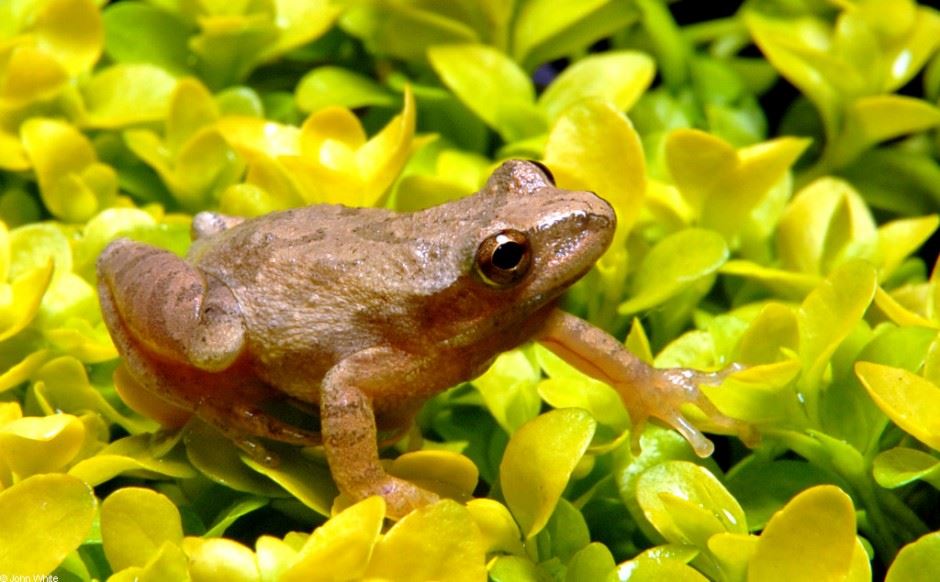- HOME
- Wildlife We Love
- Calling All Critters
- Spring Peepers

Spring Peepers
*Please note that clicking a link below will take you to a different website. To return to this page, simply close the new tab or window that opens. There are two subspecies of the spring peeper, the northern (P. c. crucifer) and the southern spring peeper (P. c. bartramiana). The northern is similar to the southern except for a strong dark marking on the southern frog’s belly. P. c. bartramiana is found along the southern Gulf Coast from south eastern Texas to northern Florida and southern Georgia, while the northern can be found all over the eastern USA and eastern Canada. NicknamesOn Martha’s Vineyard, peepers are commonly called “pinkletinks”; in New Brunswick, Canada, they are sometimes called “tinkletoes”, although not commonly known by that name, and usually referred to as simply “peepers”. On Nova Scotia‘s South Shore, they are sometimes referred to as “pink-winks.” Anatomy and PhysiologySpring peepers are tan or brown with a dark cross that roughly forms an X on their dorsa (thus the Latin name crucifer, meaning cross-bearer[2]), though sometimes the marking may be indistinct.[3][4] They have a body length between less than 1 in (25 mm) to 1.5 in (38 mm)[4] and a weight between 0.11 and 0.18 oz (3.1 and 5.1 g).[3] The species has large toe pads for climbing, although it is more at home amid the loose debris of the forest floor.[3] The color variations of the P. crucifer are mostly tan, brown, olive green, and gray. Females are lighter-colored, while males are slightly smaller and usually have dark throats. This frog has a vocal sac located by its throat, which expands and deflates like a balloon to create a short and distinct peeping sound. Only males have the ability to make this loud high-pitched noise, and they use it to attract mates. EcologySpring peepers primarily live in forests and regenerating woodlands near ephemeral or semipermanent wetlands.[5] This amphibious species requires marshes, ponds, or swamp regions to support the aquatic environment the eggs and tadpoles need. In the northern reaches of their range, spring peepers must frequently endure occasional periods of subfreezing temperatures during the breeding season. The species can tolerate freezing of some of its body fluids, and undergoes hibernation under logs or behind loose bark on trees.[3] It is capable of surviving temperatures as low as -8°C.[6] This species frequently occurs in breeding aggregations of several hundred individuals, and commonly breeds in many small wetlands, including swamps and temporary pools and disturbed habitats, such as farm ponds and borrow pits.[5] Cape Ann Vernal Pool Team * P.O. Box 39 * Gloucester, MA 01931 |
